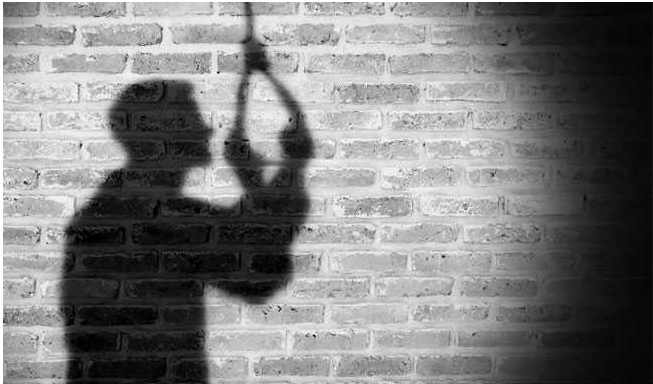A recent report reveals that student suicides in India are increasing at an alarming rate, surpassing both population growth and general suicide trends. The report, titled “Student Suicides: An Epidemic Sweeping India,” was released on Wednesday at the Annual IC3 Conference and Expo 2024.
Citing data from the National Crime Records Bureau (NCRB), the report underscores that while overall suicide rates in India have risen by 2% annually, the rate of student suicides has jumped by 4%. The report also suggests that these figures could be underreported, pointing to an even graver issue.
The IC3 Institute, a volunteer-driven organization, supports high schools globally by offering guidance and training resources. It helps establish and sustain robust career and college counseling departments for administrators, teachers, and counsellors.
“The rate of student suicides has consistently exceeded both population growth and overall suicide trends. Over the past decade, while the population of individuals aged 0-24 decreased slightly from 582 million to 581 million, student suicides surged from 6,654 to 13,044,” the report noted.
One in seven young people in India, aged 15 to 24, faces poor mental health, including symptoms of depression and disinterest. Alarmingly, only 41% of those surveyed felt the need to seek help for their mental health issues,” according to the UNICEF report, The State of the World’s Children.
Last year, the IC3 Institute released the first report on student suicides, revealing that over 13,000 students died by suicide annually in India. This alarming trend persists. In response, the IC3 Institute established a task force dedicated to strategic leadership in student mental health.
1. In 2022, there were 13,044 reported student suicides compared to 13,089 in 2021, representing an insignificant decrease in Y-O-Y.
2. In comparison, total suicides (students and other people) increased by 4.2 percent, from 164,033 in 2021 to 170,924 in 2022.
3. Over the last 10 and 20 years, total suicides increased 2percent annually on average while student suicides increased 4percent – i.e. 2X that of total suicides.
4. Student suicides are 7.6percent of the total suicides, similar to that of many other professions such as salaried persons, farmers, unemployed persons, and self-employed persons.
5. Gender-wise, male student suicides are higher than female student suicide counts. Male student suicides increased 50percent while female student suicides increased by 61percent over the last 10 years. Both male and female students have increased by 5 percent annually on average over the last five years.
STUDENT SUICIDE RATES: WHICH INDIAN STATES HAVE THE HIGHEST STUDENT SUICIDE RATES?
Maharashtra, Tamil Nadu, and Madhya Pradesh remain as the three highest states. These three states include one-third of the country’s total student suicide count.
- Uttar Pradesh, with the largest population amongst all states in India, now features among the five states with the highest student suicide rates, perhaps indicating improved reporting processes
- Tamil Nadu and Jharkhand counts indicate high YoY increases in student suicides; 14percentand 15percentrespectively
- Rajasthan, with the infamous Kota coaching city, is ranked tenth with 571 student suicides.
The incidence of student suicides continues to surpass both population growth rates and overall suicide trends. Over the last decade, while the population of 0-24-year-olds was reduced from 582 million to 581 million, the number of student suicides increased from 6,654 to 13,044.
MALE STUDENT SUICIDES DROP WHILE FEMALE STUDENT SUICIDES INCREASE YEAR-OVER-YEAR
In 2022, male students made up 53% of all student suicides. From 2021 to 2022, suicides among male students decreased by 6%, while those among female students rose by 7%. Over the past decade, male student suicides increased by 99%, and female student suicides by 92%. It’s crucial to note that accurate data collection, recording, and reporting for transgender students are necessary, as their circumstances are not well represented in the current data.
While we may not have all the answers, we know enough to act. We need to advocate for and safeguard the mental well-being of every student. Achieving this will require unwavering dedication accompanied by adequate resources, open communication to dismantle taboos and obstacles, and proactive measures to mitigate risk factors and enhance protective factors in key areas of students’ lives, particularly within the family and school environments.
Commenting on the findings, Ganesh Kohli, Founder of the IC3 Movement, stated, “The report serves as a reminder of the urgent need to address mental health challenges within our learning institutions. Our educational focus must shift to fostering the competencies of our learners such that it supports their overall well-being, versus pushing them to compete against each other. We must build a systematic, comprehensive, and robust career and college counselling system within each institution, while seamlessly integrating the same within the learning curriculum. Through this year’s Annual IC3 Conference, we aim to galvanise action and drive systemic change in how we approach student development through counselling and career guidance.”
STUDENT SUICIDE INCIDENCE IS SIMILAR TO MANY OTHER PROFESSIONS
In 2022, student suicides accounted for 7.6% of all suicides, up from 5.6% over the previous eight years. This marks a significant increase in the share of student suicides.
Over the past year, the task force launched initiatives including an annual mental health survey, student-led school plays to bring awareness and reduce stigma by empowering students, and focused education and training programs for educators to support student well-being.
👉 Click here to read the latest Gujarat news on TheLiveAhmedabad.com




